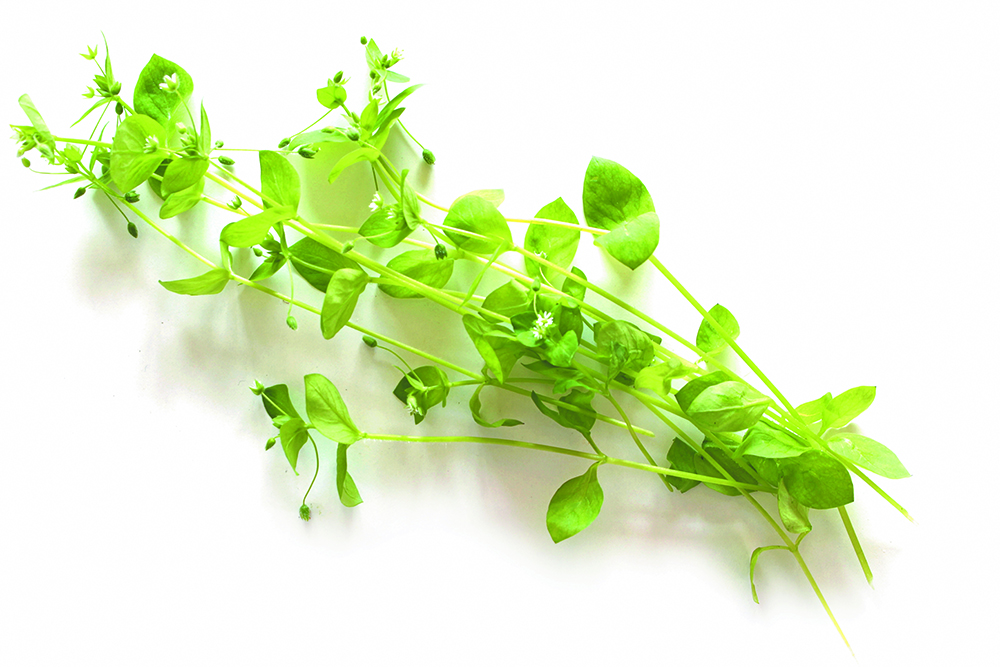CHICKWEED IS PLENTIFUL, NUTRITIOUS AND TASTY. THIS MILD FLAVORED PLANT IS A HEALTHY ADDITION TO ANY MEAL.
Name: Chickweed
(Stellaria media)
Chickweed is a member of the pink family (Caryophyllaceae), which consists of between 83 to 89 genera (depending on which botanist you follow) and about 3,000 species worldwide. Stellaria media is one of the more common members of this family and is found globally.
Description
Chickweed is a weak-stemmed plant, barely able to support itself more than 6 inches or so off the ground. The plant is found sprawling low to the ground, usually in clumped, intertwined masses.
With close observation, you can see a single line of tiny, fine, white hairs running along one side of the main stem. The small, oval-shaped leaves grow opposite each other in pairs, with untoothed margins, and each leaf comes to a point. The lower leaves are petioled (have a stalk), whereas the upper leaves lack a petiole and join the stem directly.
The tiny flowers are white, ¼ inch in diameter and have five petals. Each petal has a deep cleft, giving the illusion of comprising 10 petals.
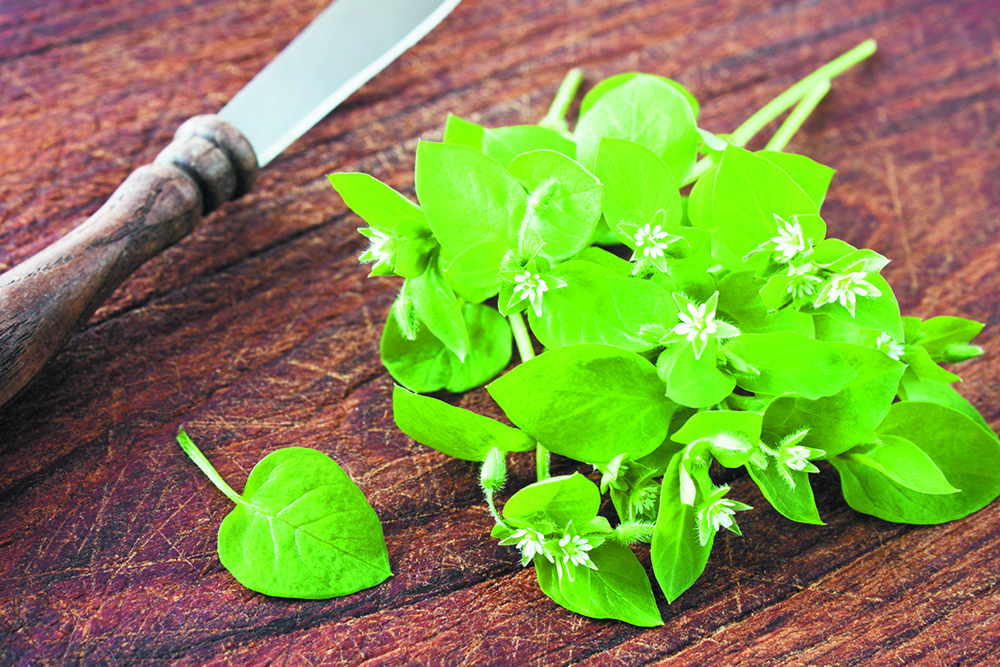
Where Found
Chickweed is a native of Europe and is today found throughout the United States. It prefers secluded areas that are shady and moist, but it will grow for a short time in full sun. It is quite common in disturbed soils where there is shade. In the spring, chickweed can be found in most urban areas, such as gardens and orchards.
When to Harvest/Availability
Chickweed springs up with the winter and spring rains and is typically only available during the spring (and possibly early summer). The plant is a short-lived annual and is completely withered up by summer.
Uses
The entire plant above ground is edible raw. Try to pick the taller, more-mature plants so that the tender, young plants can continue to grow. The best way to collect chickweed is to use a sharp knife or scissors and trim off handfuls of the plant from the patch. Uprooting the plants is neither necessary nor desirable. A thorough cold-water rinse, and this succulent salad green is ready to be enjoyed. A simple oil-and-vinegar dressing, along with a bit of avocado, creates a wonderful chickweed salad. Chickweed’s distinctive flavor is mild and unobjectionable. It can also be lightly cooked and prepared like spinach, making it a healthful addition to any meal.
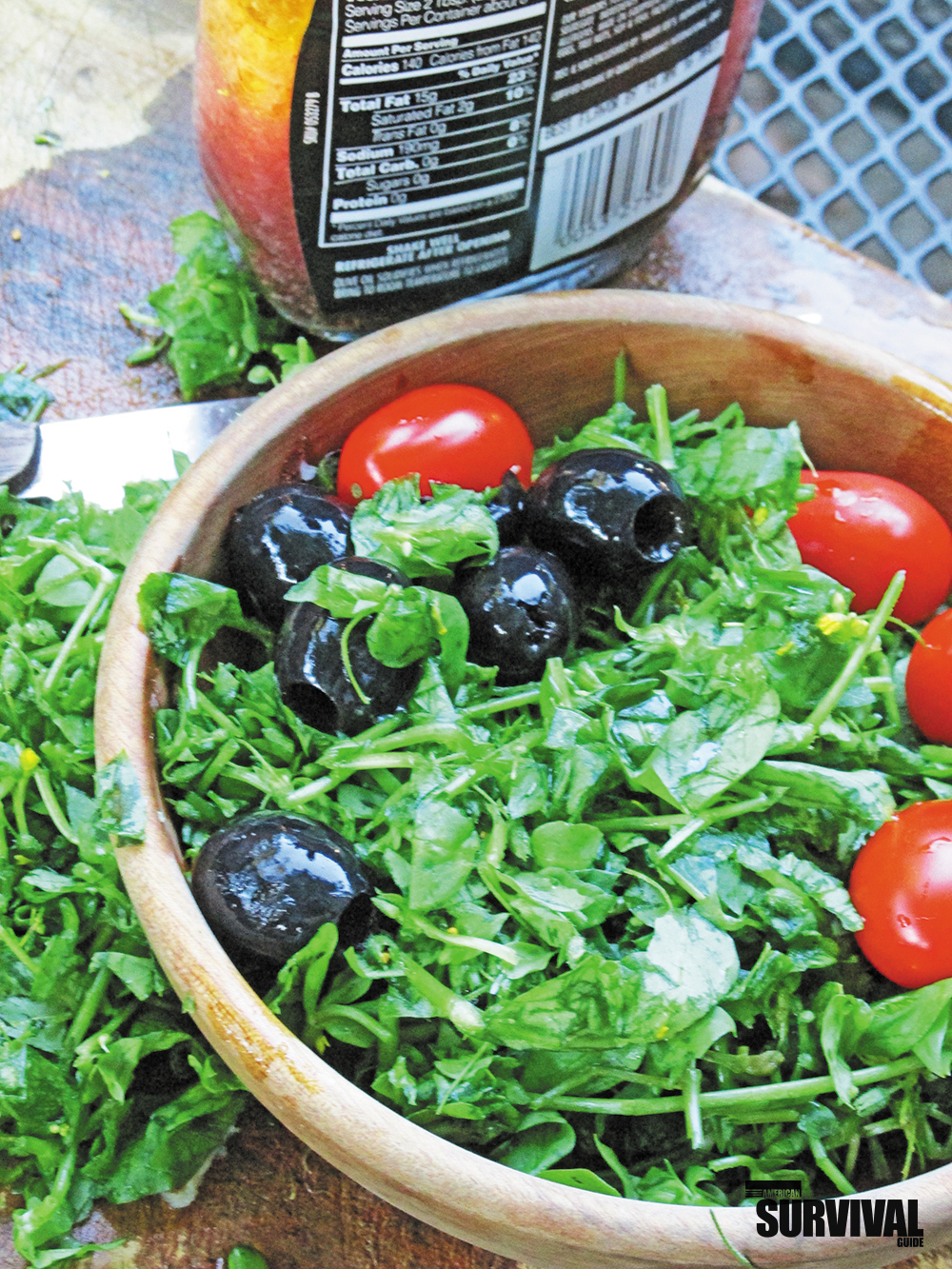
The name, “chickweed,” apparently has its origins in the fact that chickens (and other birds) feasted on this plant first whenever it was available. Chickens will eat the seeds of chickweed, as well as all the leaves and tender stems
PROCESSING: You do not need to uproot chickweed when you harvest it. Cut it with a sharp knife above the root level and then pick out any foreign debris. Rinse it well before using it in salad or other dishes. Typically, when I make chickweed salad, the only processing I do is rinsing and then dicing it.
MEDICINE/NUTRITION: One hundred grams (½ cup) of chickweed leaf contains 350 milligrams of vitamin C, 160 milligrams of calcium, 49 milligrams of phosphorus, 29 milligrams of iron and 243 milligrams of potassium.
Chickweed is regarded as an effective diuretic. The fresh leaves and stems can be infused for a tea (dried and powdered leaves can also be used).
OTHER USES: An Amish product that contains dried and powdered chickweed blended with beeswax and olive oil is used as a treatment for mosquito bites. On the few occasions I’ve had to use it, I found it to be very effective in treating the bite.
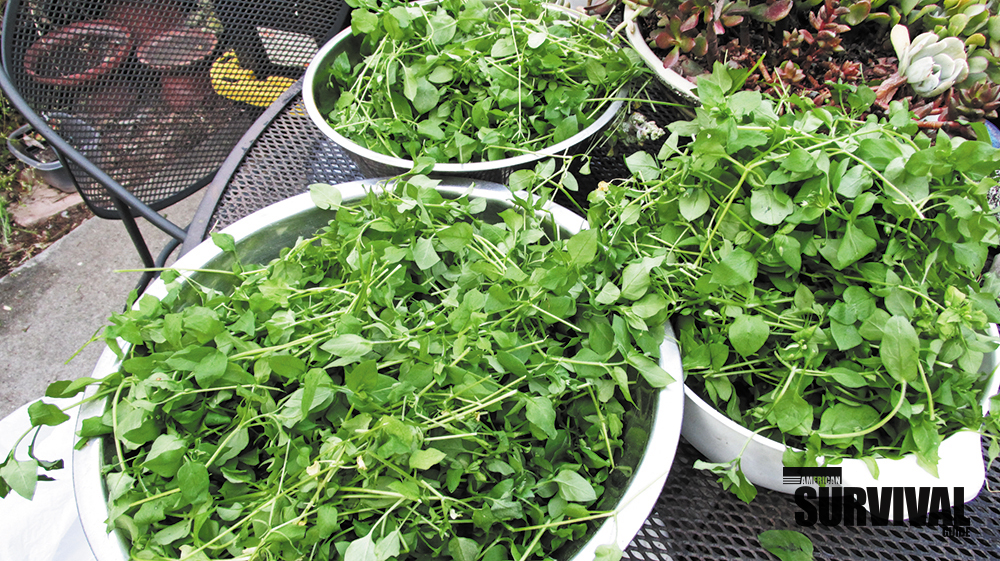
Advice for Growing
Chickweed is so common that it is unlikely you’d ever need to cultivate it. However, when I wanted to ensure I had a patch of it growing in an experimental garden, I collected the dried plants and seeds in late summer and scattered them in the garden when the rains began. The area now produces abundant chickweed every year. (In addition, if you do some research, you will find some seed catalogs that sell chickweed seeds.)
Cautions
Make sure you have properly identified chickweed. It will frequently grow side by side with common spurge (Euphorbia peplus), and foragers who are not meticulous can inadvertently add spurge leaves to their chickweed salad bag. Eating a small amount of spurge will probably result in no ill effects, but consuming enough can cause vomiting. Spurge typically grows upright, with an erect, somewhat red, stem and alternate rounded leaves. If you break the stem of spurge, you will see white sap.
Recipes
CHICKWEED TOSTADA
Warm a tostado on a frying pan. Add shredded Swiss cheese and let it melt. Add diced chickweed, sliced avocado and a few tomatoes. Serve with sour cream and hot sauce to taste.
CHICKWEED BROTH
Warm 2 cups of miso broth. Add ¼ cup diced green onions, ¼ cup diced tofu and a cup of diced chickweed. Warm in a covered pot for about 15 minutes. Serve warm.
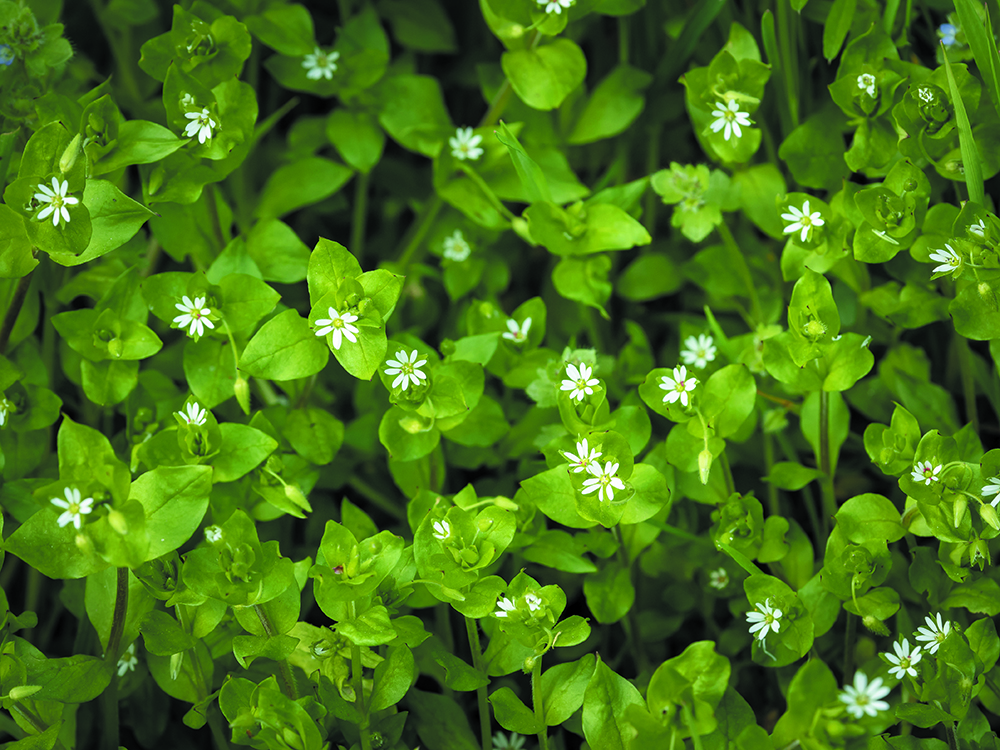
CHICKWEED SALAD
- 2 cups of diced chickweed
- 1 diced tomato
- ½ cup diced green onions
- ½ cucumber, thinly sliced
Blend all the ingredients and add a salad dressing of your choice. Serves two.
About ASG’s Plant Advisor
Christopher Nyerges has been teaching ethnobotany since 1974. He is the author of Guide to Wild Foods and Useful Plants and other books on the uses of wild plants. Nyerges has contributed many articles to American Survival Guide on a wide range of topics. He can be reached at www.SchoolofSelf-Reliance.com.


